« View all research
#Social Augmentation
A Social Wearable that Affords Vulnerability
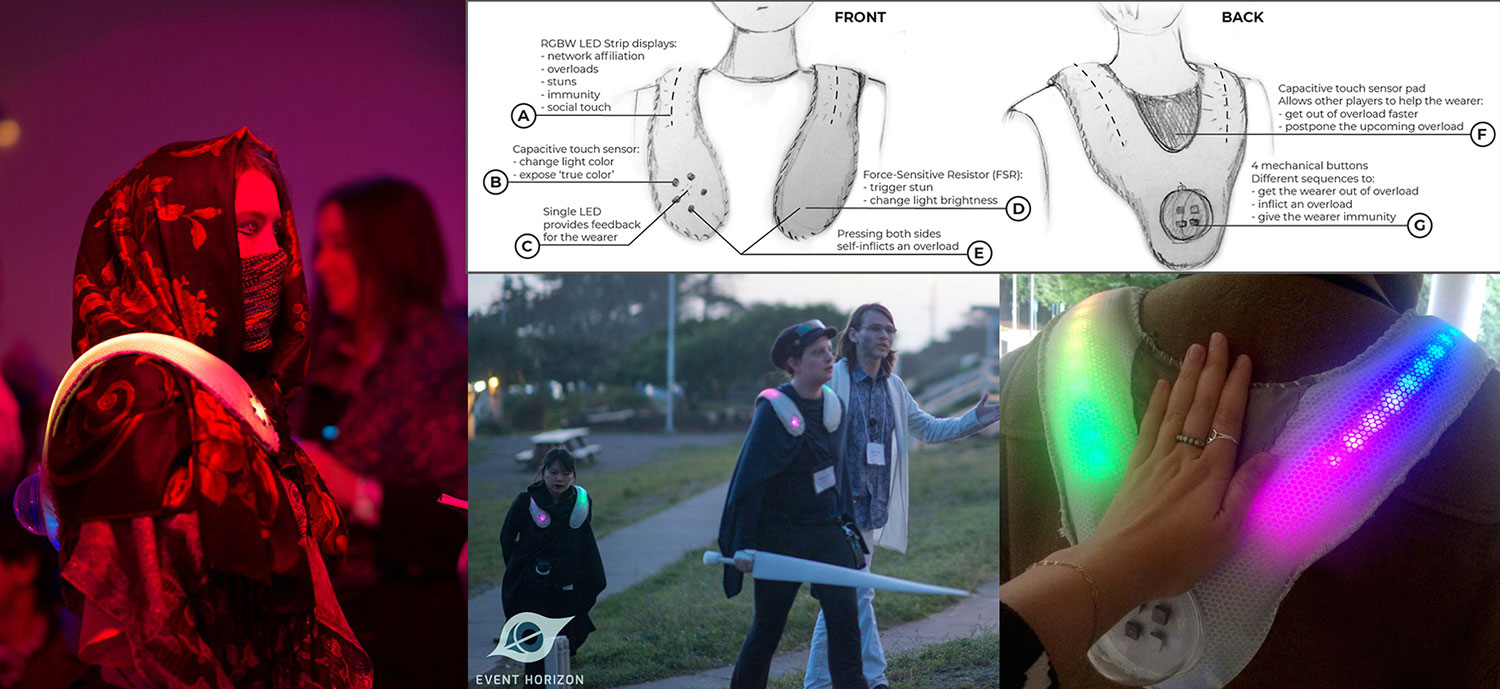
Vulnerability is a common experience in everyday life and is frequently perceived as a flaw to be excised in technology design. Yet, research indicates it is an essential aspect of wholehearted living among others. In this project we co-designed and deployed "True Colors", a novel wearable device intended to support social interaction in a live action roleplay game (LARP) setting. We followed a Research-through-Design process that helped us to discover and articulate the possibility space of vulnerability in the design of social wearables, as support for producing a sense of social empowerment and connection among wearers within the LARP. Our conclusions may be of value to others designing wearables and related technologies aimed at supporting co-located social interaction in games/play. This project was led by Ella Dagan and co-authored with Elena Márquez Segura, Ferran Altarriba Bertran, Miguel Flores, and Katherine Isbister. We collaborated with Event Horizon Larp crew.
#Social AugmentationDesign Framework for Social Wearables
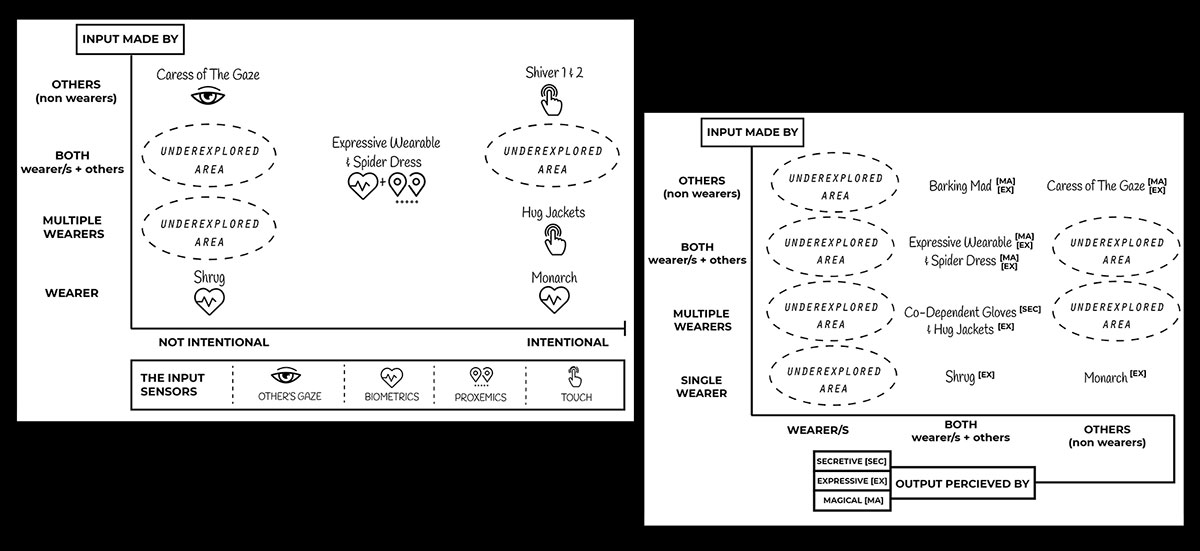
Wearables are integrated into many aspects of our lives, yet, we still need further guidance to develop devices that truly enhance in-person interactions, rather than detract from them by taking people’s attention away from the moment and one another. In this project we created an annotated portfolio of ‘social wearables’, namely technology designs worn on the body that augment co-located interaction. The design work we described can serve as inspiration for others. We then also propose a design framework for social wearables grounded in prior work, as well as our own design research, that can help designers to ideate by raising valuable questions to begin their inquiry with and use to evaluate their designs. We illustrate the evaluative value of this framework through two social wearable designs, each tested in the appropriate social setting. This project was led by Ella Dagan and co-authored with Elena Márquez Segura, Ferran Altarriba Bertran, Miguel Flores, Robb Mitchell, and Katherine Isbister.
#Social AugmentationWearables For Group Discussions
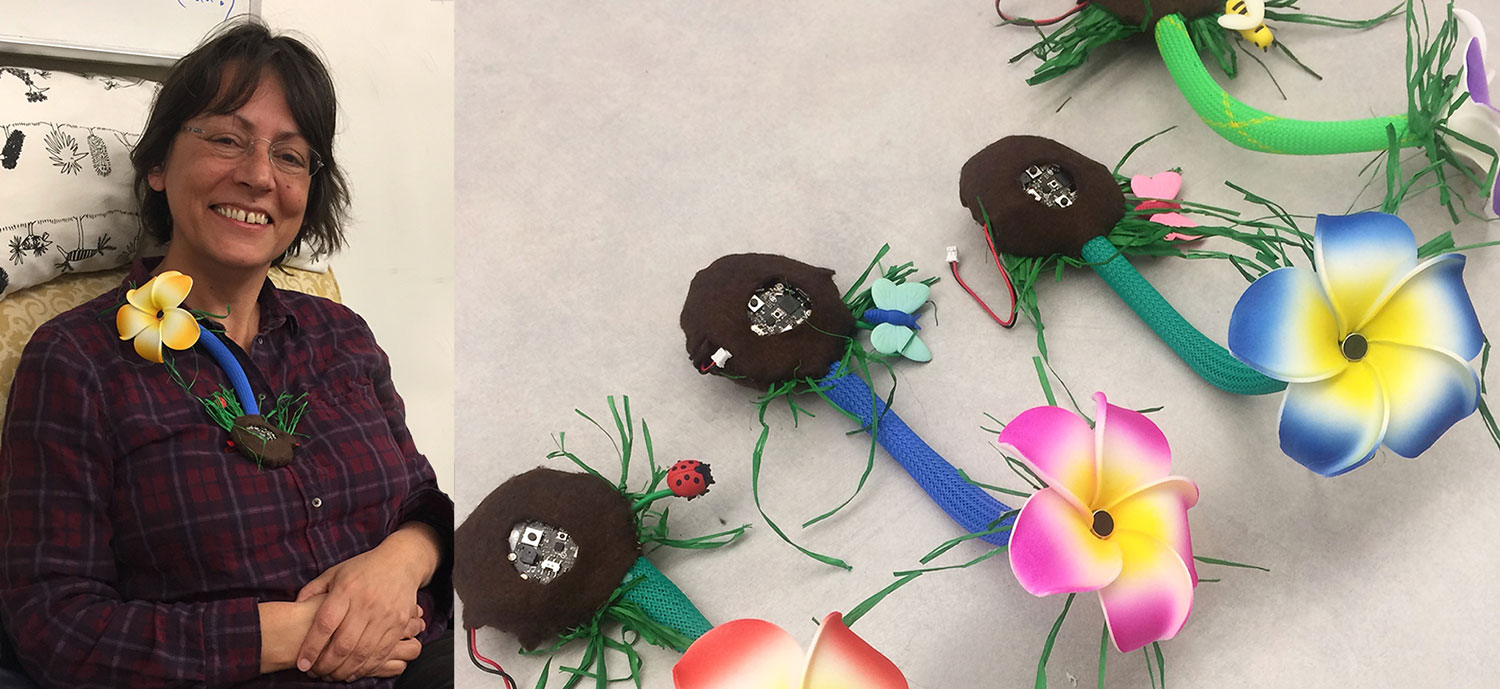
In this project we explored a social wearables prototype, i.e. a wearable that augments co-located social interaction: the Lågom. This design is meant to support people to be aware of and better regulate their verbal participation in group discussions. Lågom takes the shape of a colorful, bulky and funny looking flower that senses the wearer’s speaking and responds with haptic and visual feedback. We ran a pilot study with nine people participating in a class discussion. Preliminary results show potential of the haptic feedback to increase self awareness of participation, and to help people better regulate their participation in group discussions. This project was led by Ella Dagan and co-authored with Elena Márquez Segura, Miguel Flores and Katherine Isbister.
#Social AugmentationFlippo the Robo-Shoe-Fly: a Foot Dwelling Social Wearable Companion
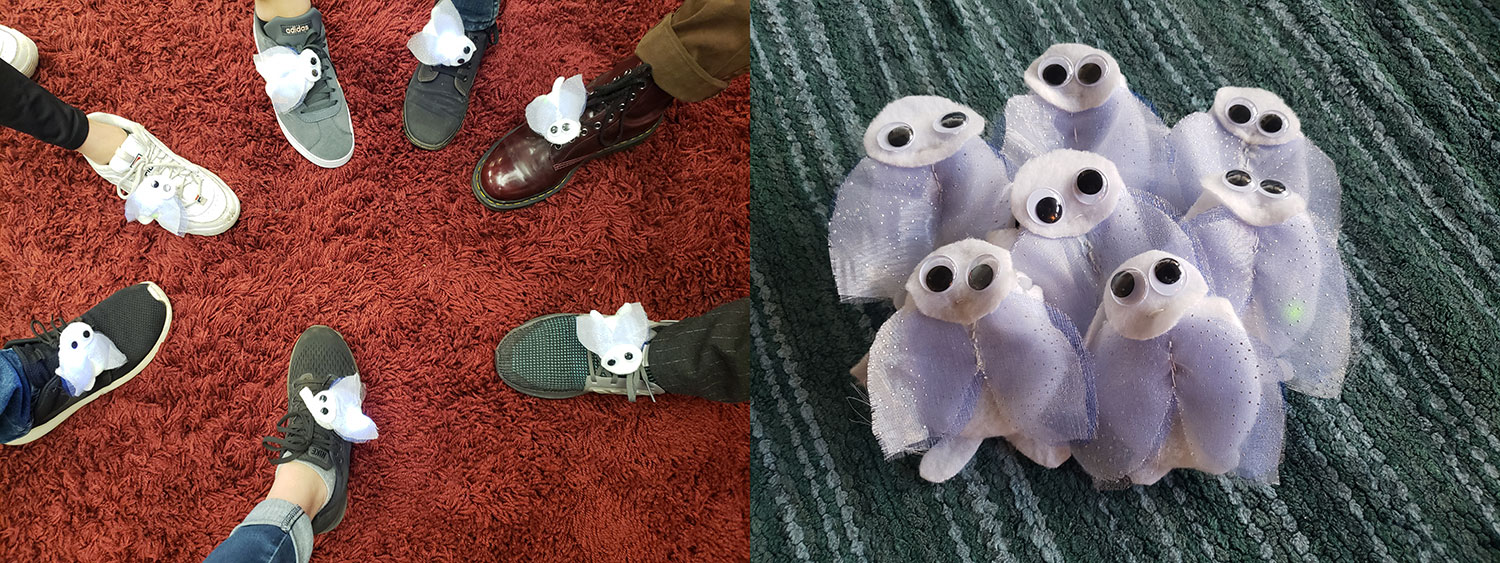
This project explores the design of a social wearble that is meant to support people to take breaks away from their desk and move, as well as to socialize with others by caring for their on-body companion 'robot'. Flippo takes the shape of a soft and fuzzy bug-like creature. It lives on people’s shoes and occasionally nudges them when it needs to move and have social interaction with another creature from its species. It does this by making sounds and visual effects, and requires that the wearers coordinate shaking their feet and helping the creatures face each other. If Flippo is satisfied with the interaction it displays a light animation and plays ’happy’ tunes, and if not it nudges the wearer again. We ran a field study with 13 participants, preliminary results show potential of the design to encourage and facilitate co-located social interaction. This project was led by Ella Dagan and co-authored with James Fey, Rachel Hsiao, Charlene Hoang, Sanoja Kikkeri, and Katherine Isbister.
#Social AugmentationSocial Wearables for LARP
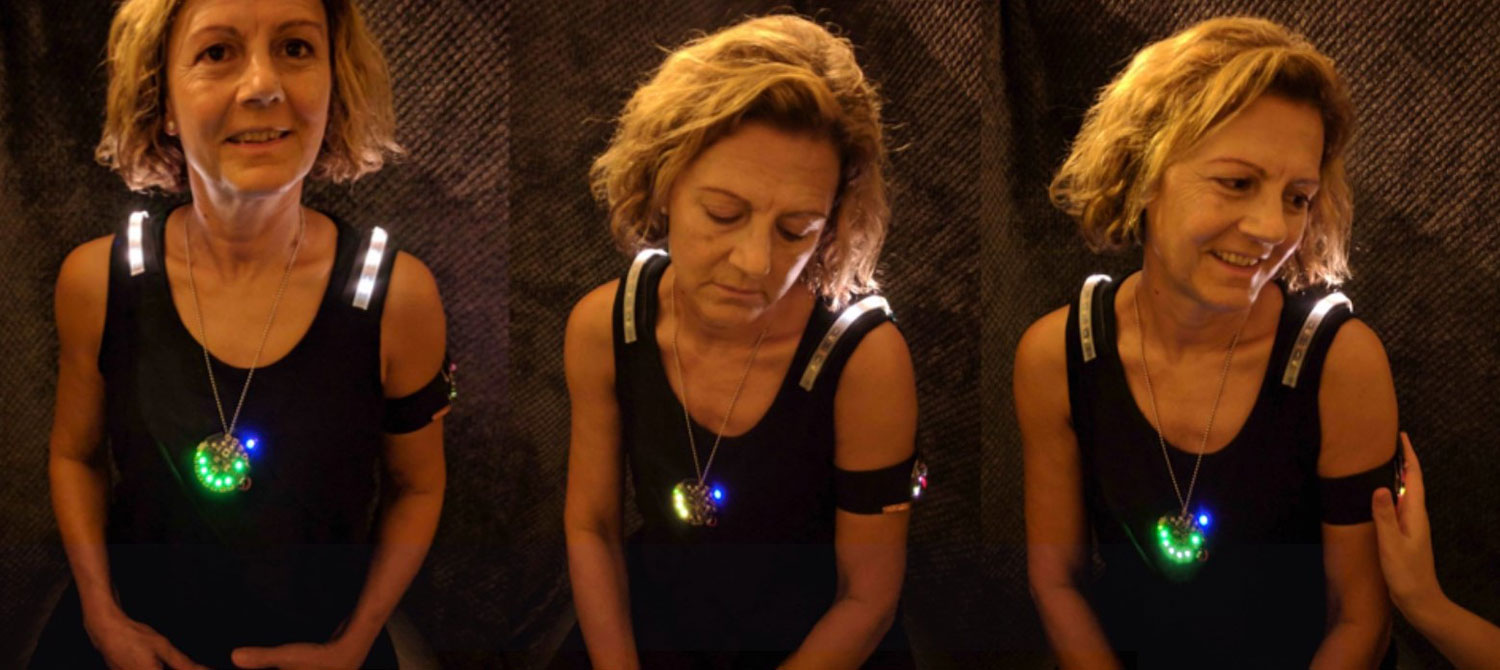
Designing wearable technology that supports physical and social engagement in a collocated setting is challenging. In this research, we reached out to an expert community of crafters of social experiences: larpers (live action role players). Larpers and larp designers have a longstanding tradition of designing and making use of a variety of elements, such as costumes, physical objects, environments, and recently also digital artifacts. These are crafted in support of co-experience values that we argue can inform the design of social wearables. We engaged in a co-design process with a game designer and co-founder of a larp production company, and embedded the resulting social wearables in a larp. Here, we present the results of this design and implementation process, and articulate design affordances that resonate with our larp designer's values. This work may inspire and inform researchers and designers creating wearable technology that is aimed at supporting collocated engagement.
#Social AugmentationSocial Wearables for Edu-LARP
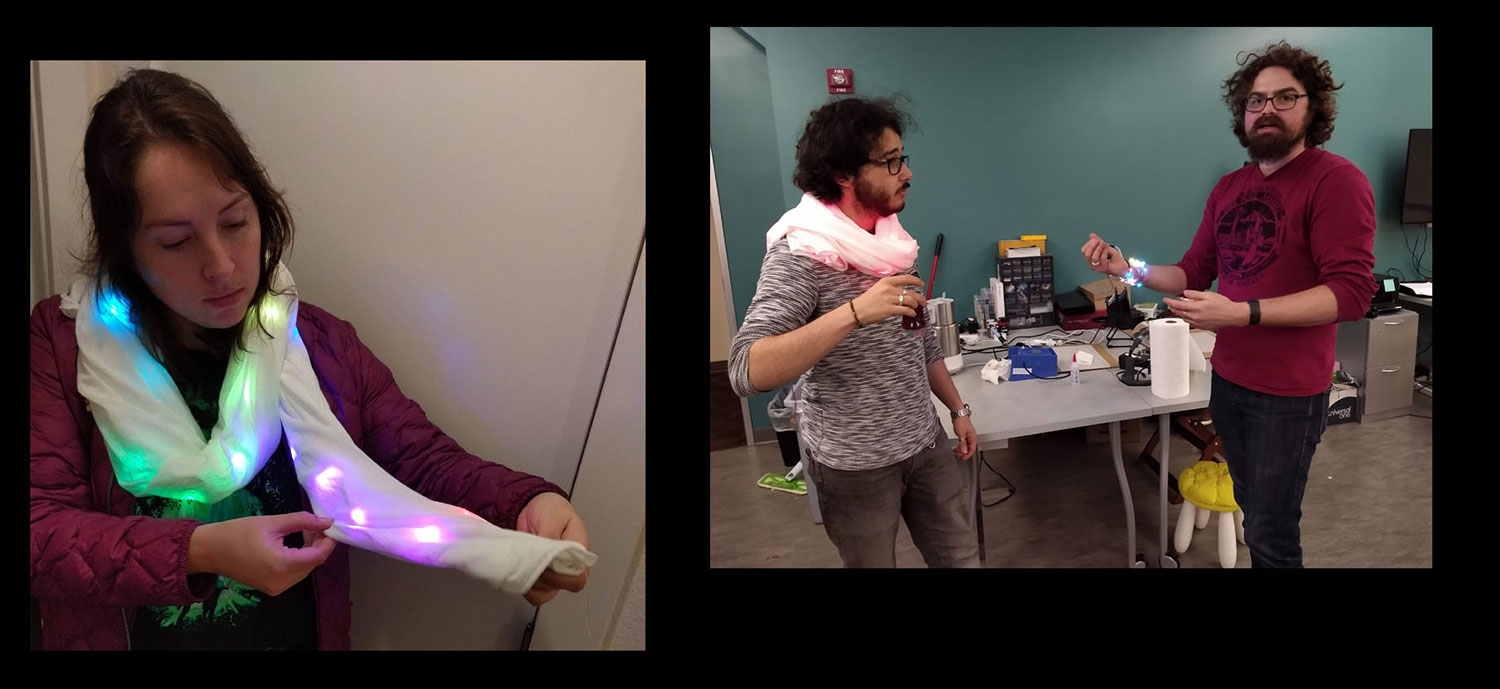
As part of our ongoing research into social wearables and combining them with the collaborative problem-solving nature of Live Action Role Play, we are designing an Educational LARP camp, aimed at a full-scale deployment by 2021. We aim to capitalize on the creative adaptation that comes from Live Action Role Play and the creation of social wearables to channel it into increased interest in Technology and Making in middle school girls, including those from lower socio-economic status and diverse backgrounds who are frequently left out of STEM. We have explored hardware and IDE options within the interconnected network of Maker ecosystems and created a prototype kit built around the BBC Micro:Bit ecosystem with an additional string of RGB LEDs. We have worked to find a form factor that offers a zero soldering fabrication and robust prototypes that are more suitable to wearable prototyping. In this paper, we discuss this early prototype and the motivation for the Educational LARP Camp.
#Social AugmentationSynergistic Social Technology: Designing Systems with ‘Needs’ that Encourage and Support Social Interaction
.jpg)
In this work we propose a strong concept for interaction design: Synergistic Social Technology (SST). This concept describes systems in which technology is designed with its own need for interaction. As a result of responding to these needs, people who use the system may benefit from social interaction with others who use the system. This concept arose through the design, prototyping, and study of a social wearable design that we called Robo-Shoe-Flies. We articulate the core principles of the SST concept. We also describe the Research-through-Design process that inspired its development and associated design-focused observations. This work may inspire those in the IxD or HCI communities focused on the design and development of technology intended to support so-cial interaction, particularly in the sense of encouraging collective, mutually-beneficial action. This project was led by Ella Dagan and co-author Katherine Isbister.
#Social AugmentationDrawing From Social Media to Inspire Increasingly Playful and Social Drone Futures
.jpg)
In this project, we created a pictorial where we explore the potential of social media to help inspire ideas for future drone design applications that support playful and social experiences. Drawing from a Situated Play Design approach, we turn to social media posts to identify recurring playful and social instances of drone use in social settings. We present the results of collecting 143 posts found on Instagram, TikTok, and YouTube, from which we identified a non-exhaustive list of drone-based play potentials, i.e. existing ways in which people already appropriate drones to playfully augment social situations. We present these play potentials as potentially valuable and inherently situated intermediate-level knowledge with generative power. We argue they might inspire the design of future drone technologies and experiences in Human-Drone Interaction (HDI), in directions that increasingly respond to people’s desires for play and social connection. This project was led by Alexandra Pometko and co-authored with Ella Dagan, Ferran Altarriba Bertran, and Katherine Isbister.
#Social Augmentation#Design MethodsSocial VR Research
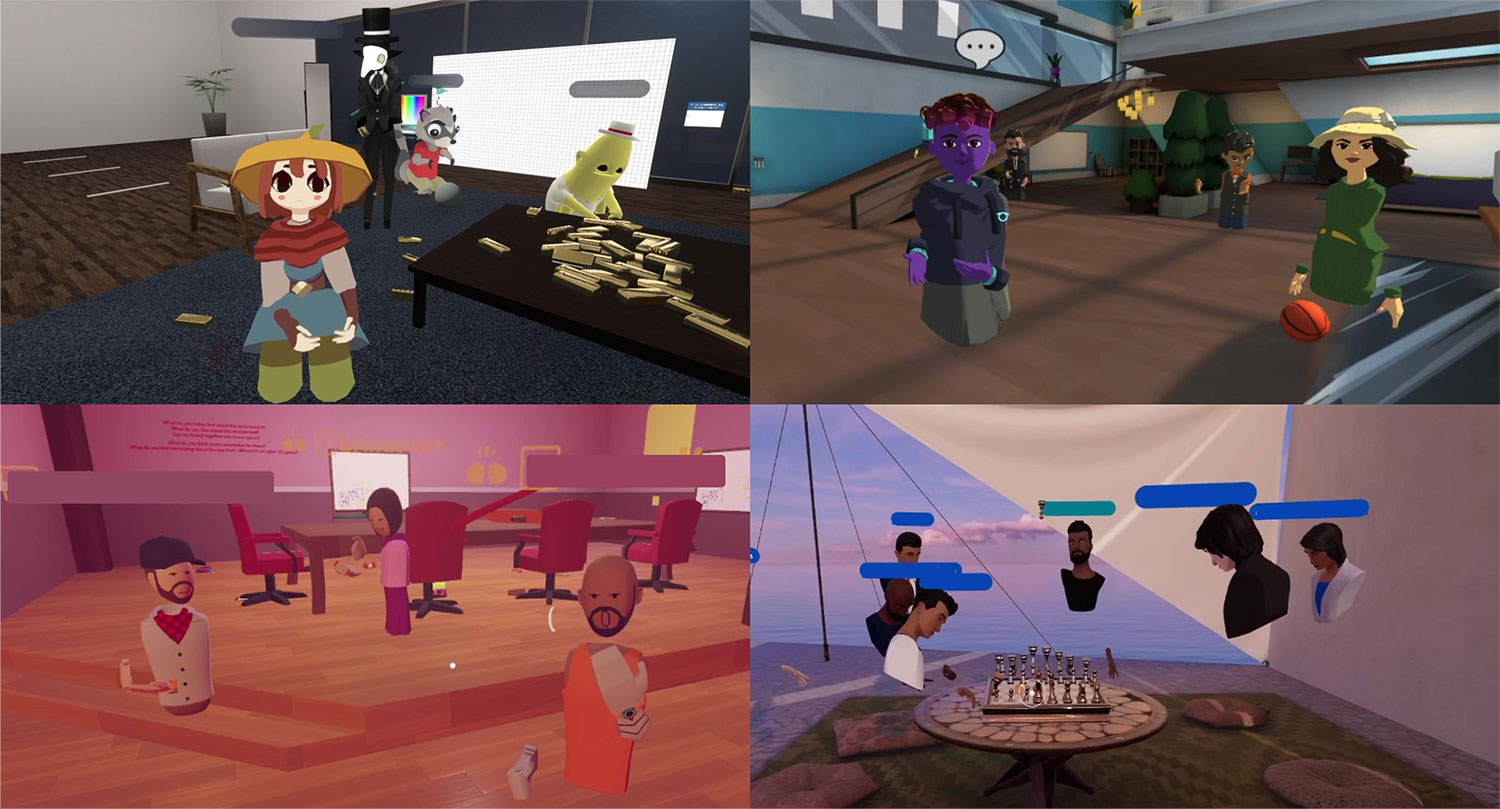
This project explores building social VR technology to improve networked meetings. VR shows promise as a technology for supporting remote meetings in new ways because it puts team members in a shared media space, which allows for familiar communication tactics. This project focuses on design and development of social VR tools to improve face-to-face meetings by helping participants time manage, come to decisions, stick to an agenda, and achieve social connection and support for ideas. These innovations seek to make online meetings more effective and satisfying. This work was supported by the National Science Foundation under Grant No. 2007627 and No. 2007755
#Social Augmentation#Social VRUnderstanding Emerging Design Practices for Avatar Systems in the Commercial Social VR Ecology
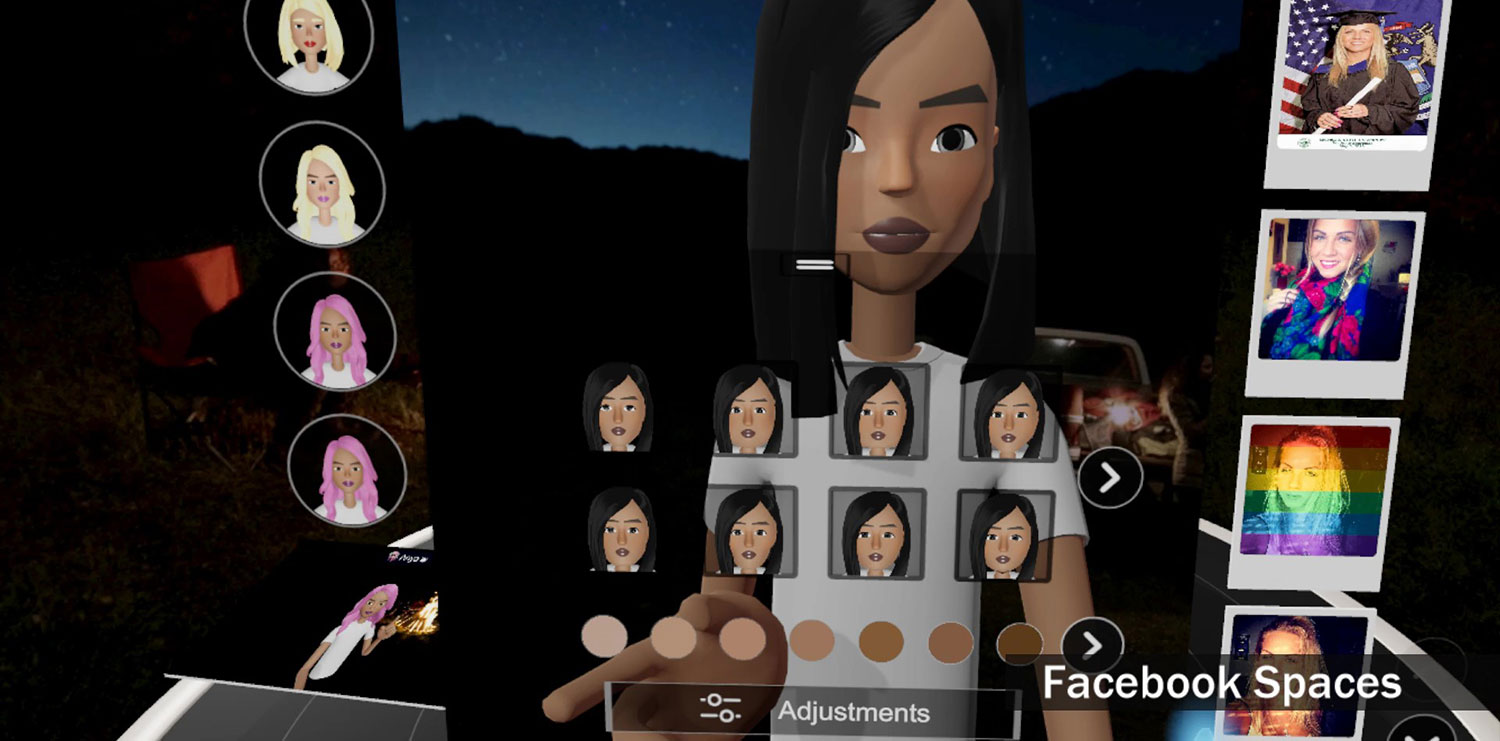
In the emerging ecology of commercial social VR, avatars that serve to represent individuals within these multi-user virtual worlds are at the heart of the embodied social experience. Current industry approaches to avatars in social VR applications vary widely, and the (sometimes tacit) design knowledge acquired by those who created these platforms has much to offer research in HCI. In this paper, we describe current design practices, and reflect on the design approaches that characterize avatars and avatar systems in this emerging commercial sector. To investigate design approaches to avatar systems and their impact on communication and interaction with people within this medium, we interviewed industry experts associated with a range of platforms including Rec Room, AltspaceVR, High Fidelity, VRChat, Anyland, and Mozilla Hubs. In analyzing the ways that design choices shape embodied experience, we map design approaches to avatar systems in this evolving landscape and make preliminary claims about the impact of these varying design approaches.
#Social Augmentation#Social VRWhat's it Mean to 'Be Social' in VR? Mapping the Social VR Design Ecology
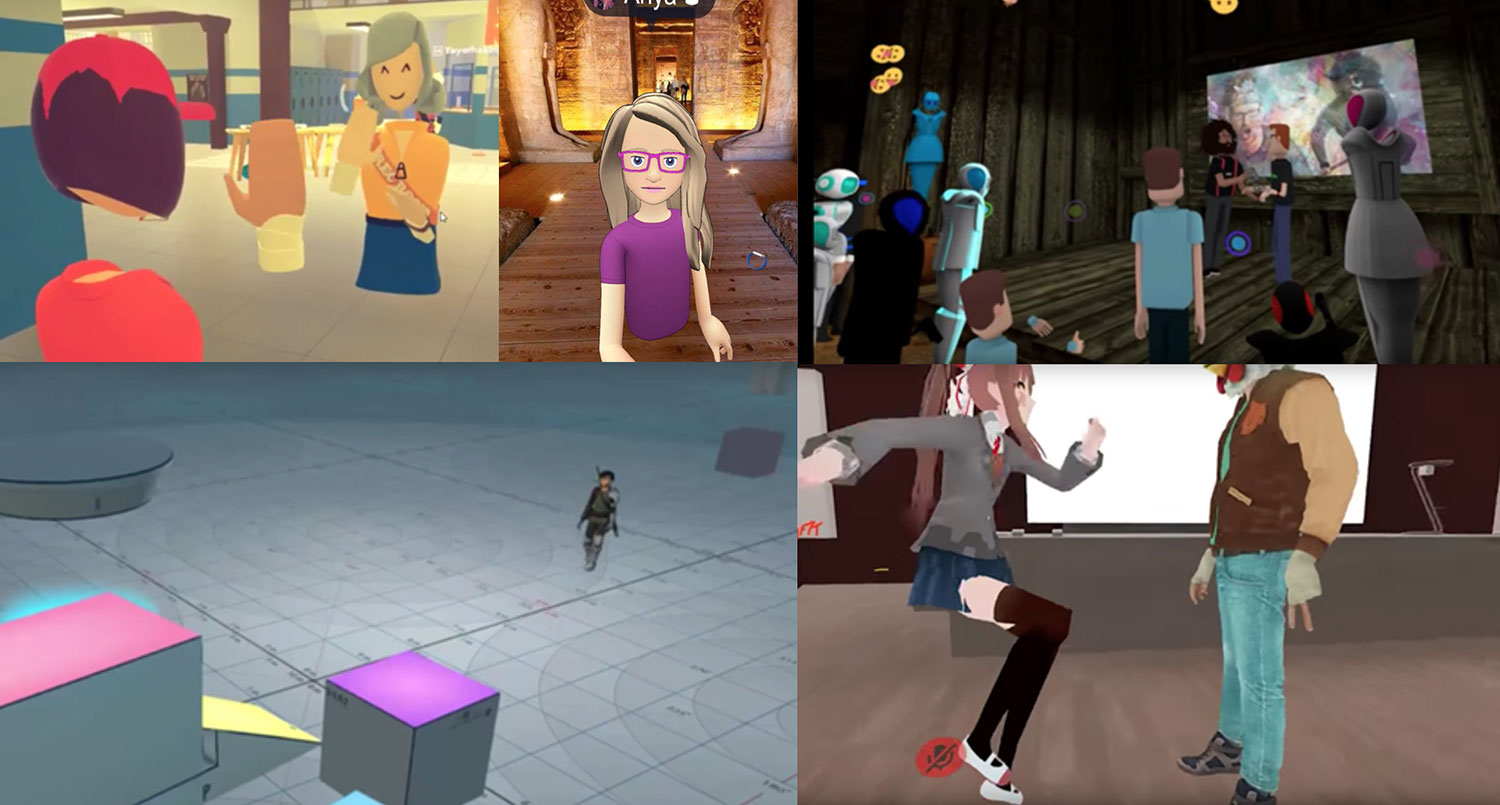
The emerging ecology of commercial social VR currently includes a diverse set of applications and competing models of what it means to be social in VR. This study maps a slice of this ecology, comparing and contrasting ways different applications frame, support, shape, or constrain social interaction. We deploy a method of design-oriented autobiographical landscape research to examine five platforms: Facebook Spaces, Rec Room, High Fidelity, VRChat, and AltspaceVR. We analyze design choices underlying these environments and draw attention to issues of space and place, locomotion, and social mechanics. Drawing on this analysis, we identify key issues and concerns for future research and design in social VR.
#Social Augmentation#Social VRShaping Pro-Social Interaction in VR: An Emerging Design Framework
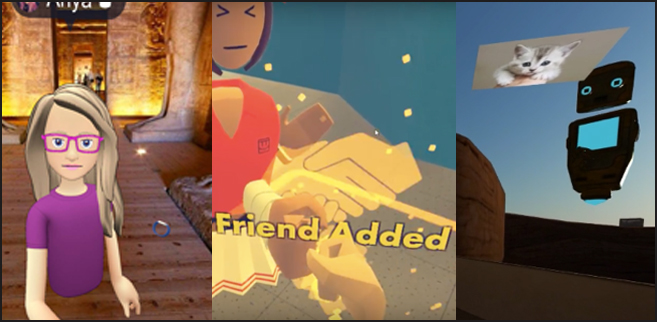
Commercial social VR applications represent a diverse and evolving ecology with competing models of what it means to be social in VR. Drawing from expert interviews, this paper examines how the creators of different social VR applications think about how their platforms frame, support, shape, or constrain social interaction. The study covers a range of applications including: Rec Room, High Fidelity, VRChat, Mozilla Hubs, Altspace VR, AnyLand, and Facebook Spaces. We contextualize design choices underlying these applications, with particular attention paid to the ways that industry experts perceive, and seek to shape, the relationship between user experiences and design choices. We underscore considerations related to: (1) aesthetics of place (2) embodied affordances, (3) social mechanics, (4) and tactics for shaping social norms and mitigating harassment. Drawing on this analysis, we discuss the stakes of these choices, suggest future research directions, and propose an emerging design framework for shaping pro-social behavior in VR.
#Social Augmentation#Social VRConversation Balance: A Shared VR Visualization to Support Remote Meetings
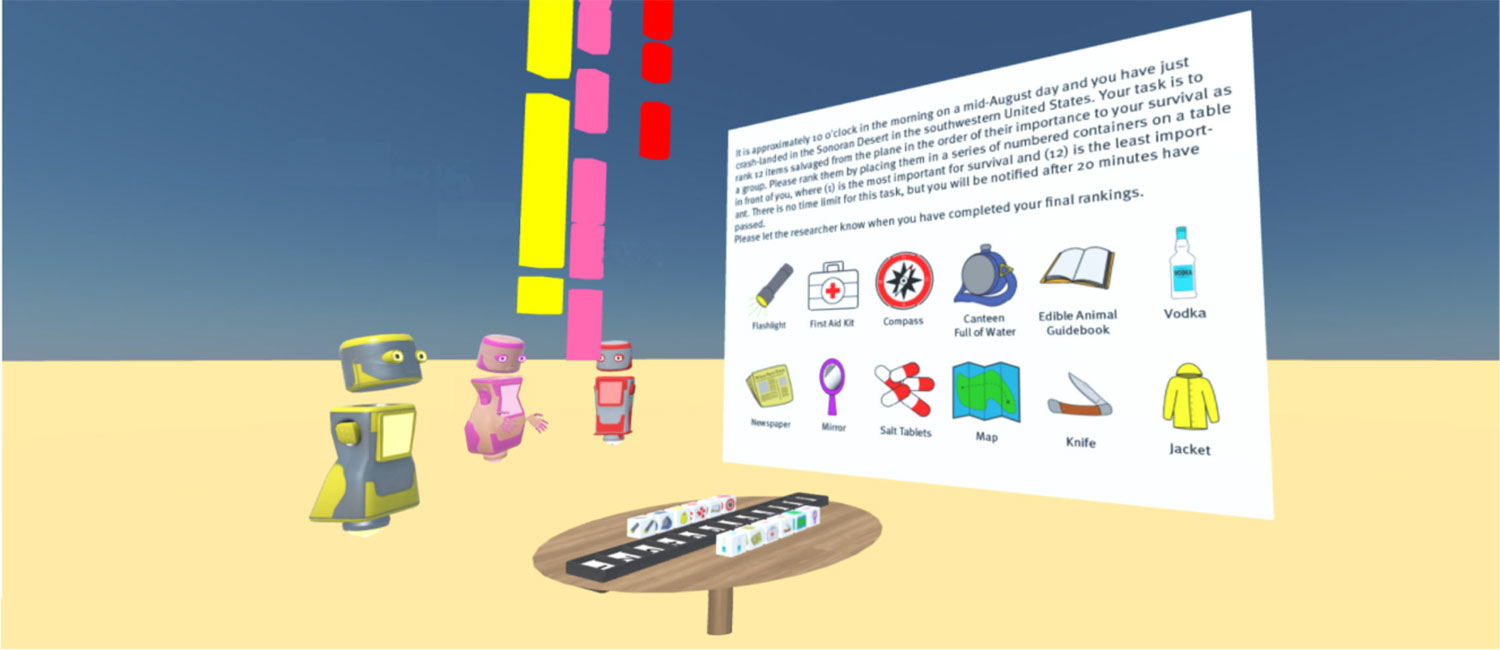
Since the spread of COVID-19, the world has pivoted to a remote working lifestyle, where people’s work lives are connected everyday through distributed technologies. This interactivity demonstration provides users with a visualization of their conversational turn-taking, within a shared Virtual Reality (VR) environment. It is intended to help support balanced communication in remote meetings. Project contributors include UCSC MS students Victor Jialang Li and Sean Fernandes, Ph.D. students Anya Osborne and Max Kreminski, undergraduate students Tara Lamb and Sarah Banks, as well as researchers working with SF State professor Joshua McVeigh-Schultz, including George Butler.
#Social Augmentation#Social VRAstaire
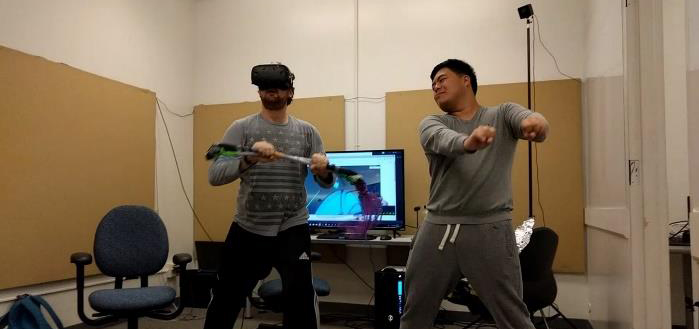
Astaire is an asymmetric collocated virtual reality (VR) game designed with the intent to encourage pro-social play in festival/home settings and provide a better spectator experience than other games. The overall goal of the game is to get the highest score possible by tagging musical notes and footsteps as quickly as you can with your controller, as they appear on beat with the music. Players are rewarded with more points the faster they tag the notes, and each interactable object within the world has a generous hitbox to create a more fluid experience, in that players should not have to struggle because the controllers are not attached to their feet or hands. It is designed to allow for 2 players to use 1 system simultaneously to play, both with different objectives and roles to consider (hence the asymmetry). The players have distinct sources of information. The player with the controller attached to their leg uses the television for guidance, as the view there is from an overhead camera above the map that shows notes that are only interactable with the controller attached to the other player 1 second before they spawn. The player inside VR can see both players’ notes, but not with the foresight or breadth of the other player. They see the footstep notes only interactable for the player outside VR, which they can then guide them to.
#Social Augmentation#Social VRSceneSampler
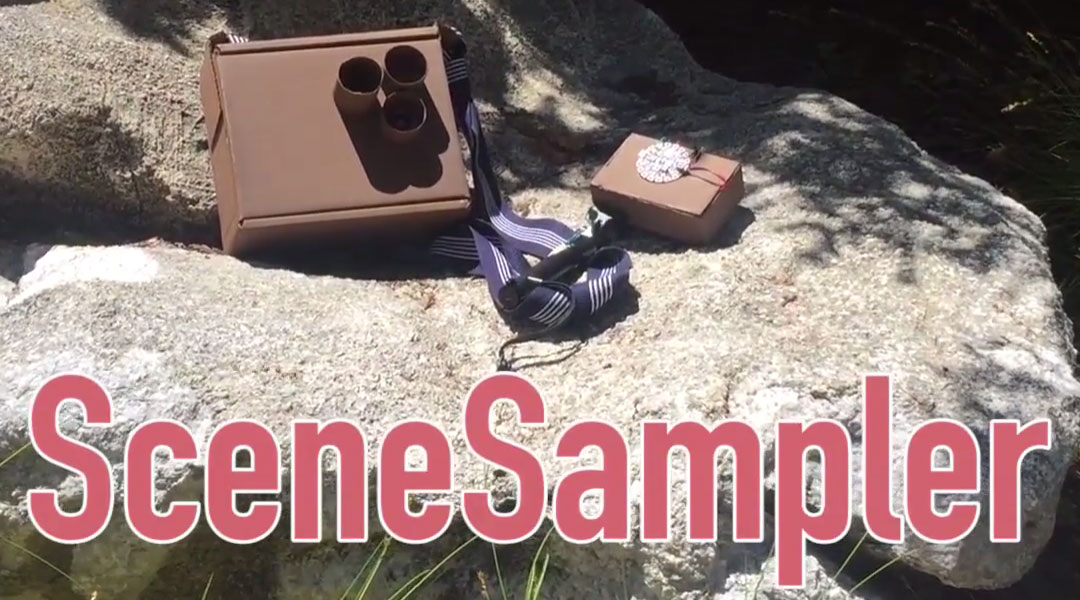
SceneSampler pushes the boundaries of local multi-player games. We’ve created our own gadgets –a wearable ‘camera’ and a handheld sound ‘sampler’– that players use collaboratively to capture brief slices of the scene (people hanging out, enjoying games, catching up) as the festival goes on. The core mechanic –seeking out particular kinds of sounds– pushes players to move around together in the social space in a playful way that’s different than they might otherwise. The game leaves traces of the festival in the form of player snapshots shared digitally –these create a secondary kind of play in the social media surrounding the festival. Overall, SceneSampler is meant to enhance the social experience of being at a game festival like IndieCade, making a game of exploring the human landscape and capturing moments for others to enjoy and remember.
#Social AugmentationAll the Feels
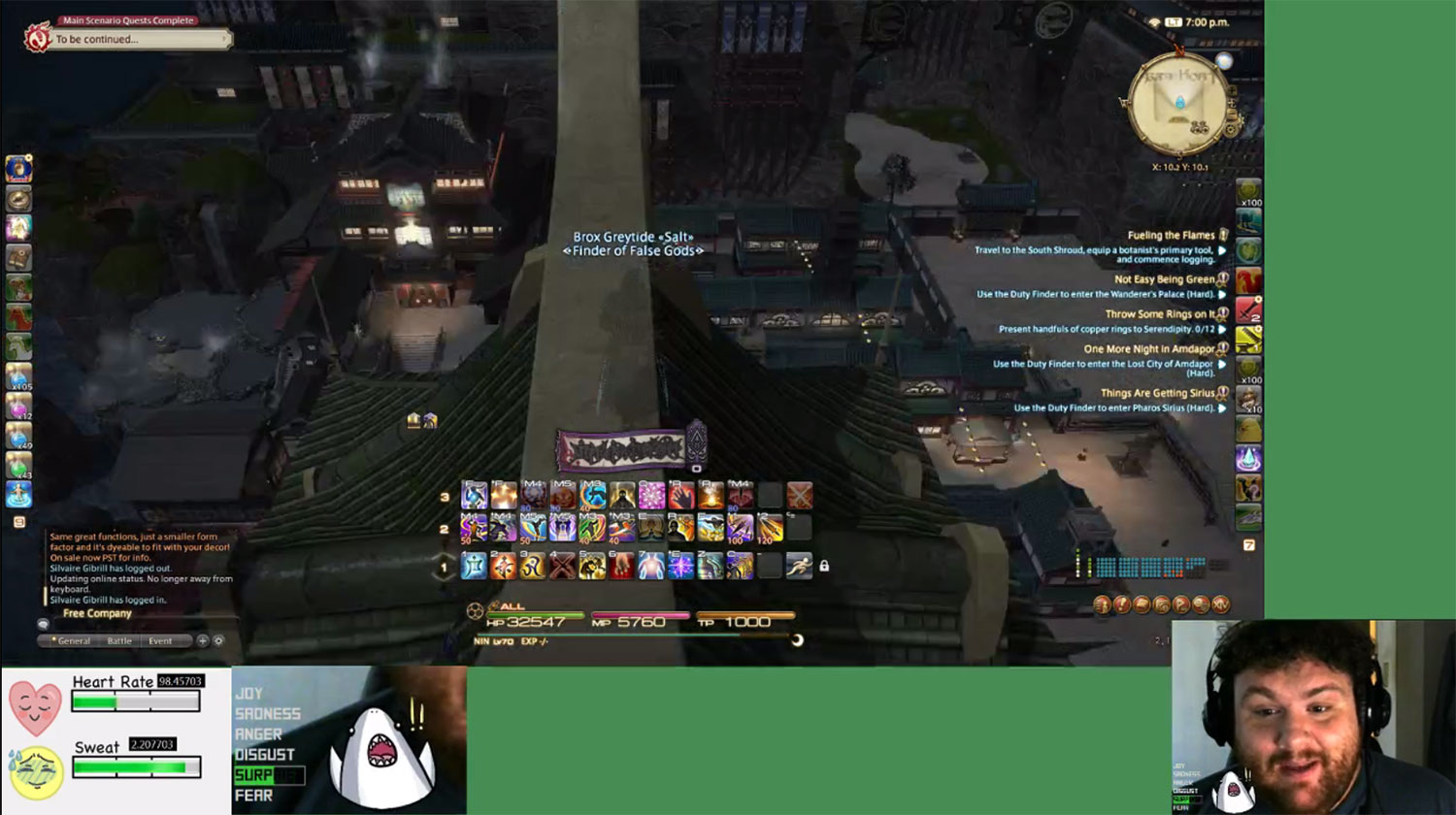
This project is called All the Feels, which is a tool that provides an overlay of biometric and webcam-derived data onto the interface of the popular video game streaming service, Twitch. The overlay provides visualization of heart rate, skin conductance, and facial emotion recognition. It is intended to enhance the spectator experience and improve streamer-spectator connection. This work opens up opportunities to improve stream quality and spectator engagement through the introduction of an interface that includes biometric signals. Janell Mora was responsible for the all the art used in the overlay, and April Grow provided consultation on the research.
#Social AugmentationIn the Same Boat
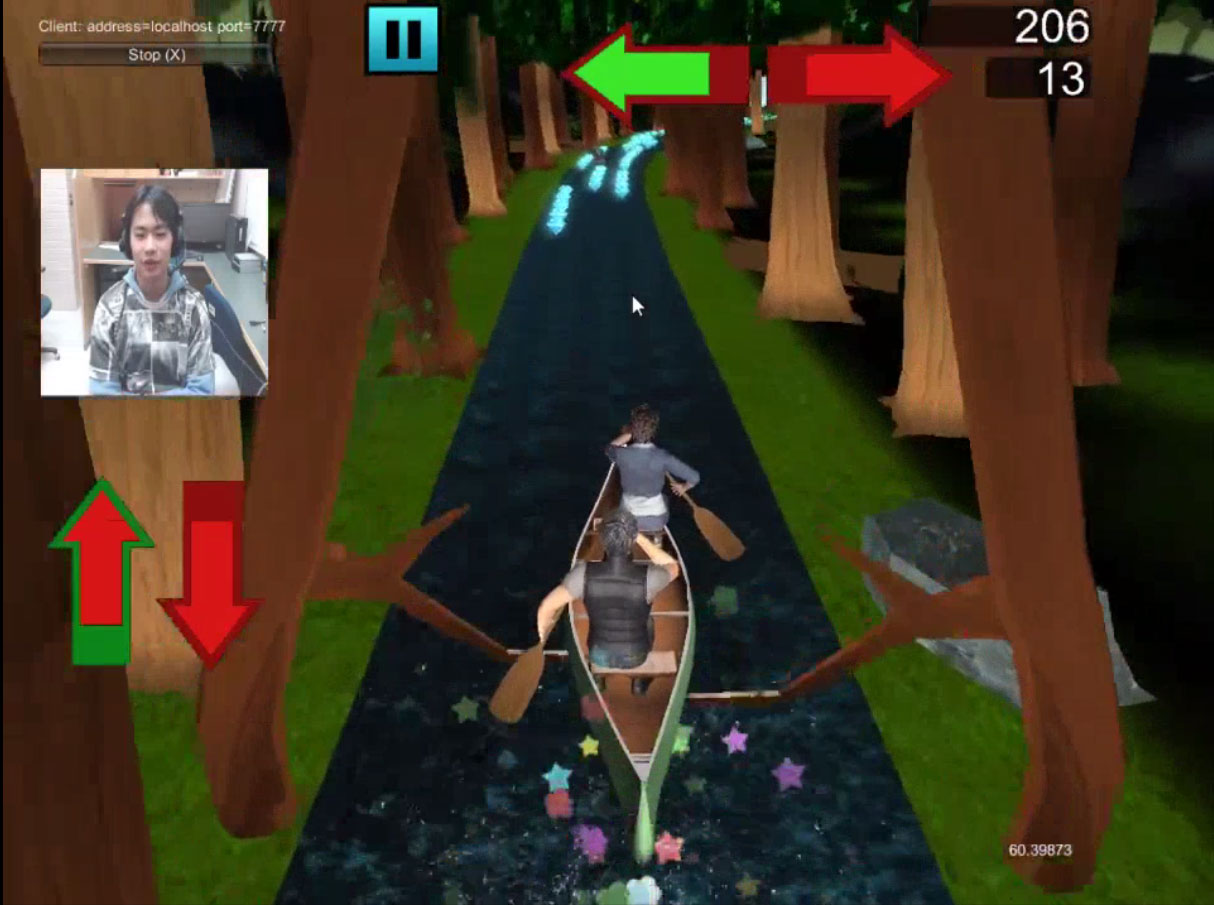
Social closeness is important for health and well-being, but is difficult to maintain over a distance. Games can help connect people by strengthening existing relationships or creating new ones through shared playful experiences. The name of this project/game is, 'In the Same Boat' (ITSB), which is a two-player infinite runner designed to foster social closeness in distributed dyads. ITSB leverages the synchronization of both players' input to steer a canoe down a river and avoid obstacles. We created two versions: embodied controls, which use players' physiological signals (breath rate, facial expressions), and standard keyboard controls. This was was a collaboration between UCSC and the University of Saskatchewan. Elizabeth Reid implemented the game, James Fey built the hardware, and Ansgar Depping provided design consultation.
#Social AugmentationYou're Giving me Mixed Signals!

In this project, we conducted a comparative analysis of several emotional reporting techniques for assessing gameplay experience. We compared newer feedback methods, such as the Sensual Evaluation Instrument (SEI) and recent tools for capturing physiological data, with more traditional techniques such as think-aloud, the Immersive Experience Questionnaire (IEQ), and retrospective interviews. Findings suggested that mixed methods offer complementary strengths in registering player emotion, are useful at different moments of play, and help to accommodate differences in the ways players' emotions manifest. We argue for the value of using multiple methods in evaluating players' emotional response to games. This work was done in collaboration with John Murray.
#Social Augmentation